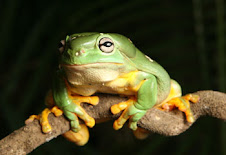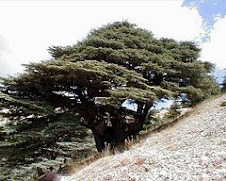ORCHARD MASON BEES AND THEIR CARE
from http://www.cvseeds.bc.ca/bees.htm
The Mason Bee can help pollinate our trees and crops
THE MASON BEE
Honeybee populations on Vancouver Island are rapidly being destroyed by mites. Blue Orchard Bees (Orchard Mason Bees Osmia lignaria) are native to our area and are 17 times as efficient at pollination of fruit trees as honeybees. These bees are not available to fertilize later food crops as the parent bees die in early summer.
Mason bees may well be able to take over the fruit tree pollination if we give a little help.
The bees are about 7/16” long and look like blue bottle flies except for having 4 wings rather than two. The male is a little smaller and has two longer antennae. The female has long belly hairs to hold pollen.
Cells for laying eggs
ITS LIFE CYCLE
The bees emerge from their over-wintering nests in the spring after about three days of 14°C (57° F) maximum day time temperature. In nature, they generally have been in beetle-made holes or other similar narrow spaces. The males are the first to appear as they come from the outer portion of the “tube”. They feed briefly and await the females which come from the deeper part of the tube.
The natural emergence of these bees is generally around March locally, but this can vary artificially if the nests are man-made and are kept in cooler temperatures until the plum or early apple trees just begin to break into bloom. The nests are then moved to a warm location.
The females emerge 3-4 days later than the males, and fertilization occurs almost immediately. The males die soon afterwards without doing any pollination. The female gathers a little nectar and about 20 loads of pollen and builds a little pyramid inside a suitable nest site. Then a single egg is laid on its end in that mass of food. She then gathers about 10 loads of clayish soil and builds a wall which seals off the egg with its food supply. Hence the name, Mason Bee. This sequence is repeated until she has provisioned, laid, and walled-off about 30 eggs. The one female will fill two or three 6” holes with eggs.
It is useful to know that she will lay eggs into holes only to a maximum of about 6” deep. She will continue to lay eggs for only 5-6 weeks. Also, as the egg-laying process brings her to the last inch or two near the surface, she withholds sperm from the eggs she lays, thus the last eggs of one hole will develop into males, So males will begin to grow only in the area near the surface, while all the deeper laid eggs will produce females. For our purposes, it is important to understand that if we want a large majority of females to be born, shallow holes such as 3-4” deep, are almost useless—they will predominantly yield males which do not pollinate and are not needed in large quantities for population expansion. Thus, in our efforts to optimize the production of bees, it seems that 6” depth is ideal.
The newly laid eggs hatch into larvae in about three days and they devour their food for the next 25 days. Then they spin a cocoon inside of which they become adults before winter time. It is important that the nest not be moved or even vibrated much between March and the end of September (as the eggs and larvae will suffocate), at which time it can be moved to a garage or other unheated space until next spring.
Full article at:
How to Raise Orchard Mason Bees in BC
More suggested browsing:
New search engine cuil.com fast and friendly
Alternative energy investing, windpower stocks
Geothermal Energy Company websites, Geothermal power links
Denmark’s Ritual of Militarisation
-
On December 8, 2025, the Copenhagen Security Summit convenes at Falkoner
Centret in Frederiksberg. With 35 speakers and more than 1,200
participants, it ...
6 hours ago



No comments:
Post a Comment